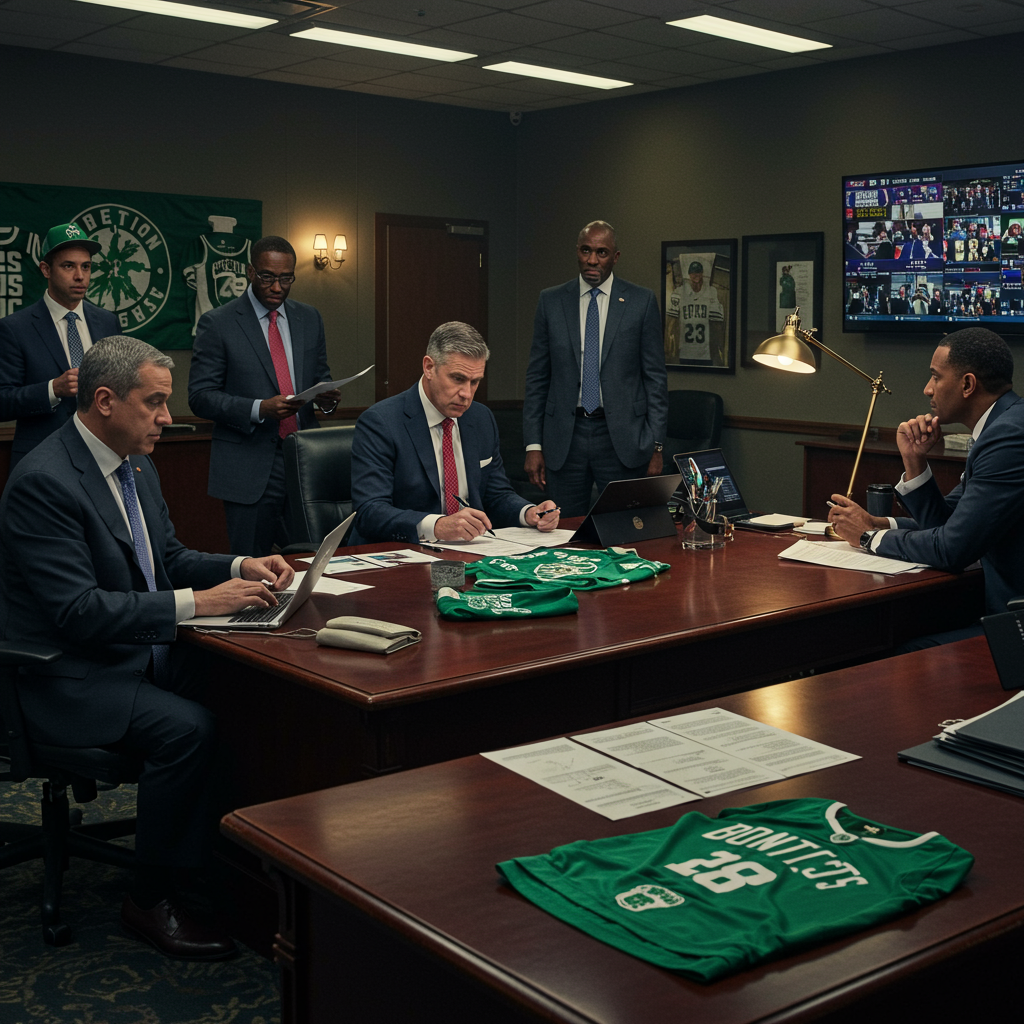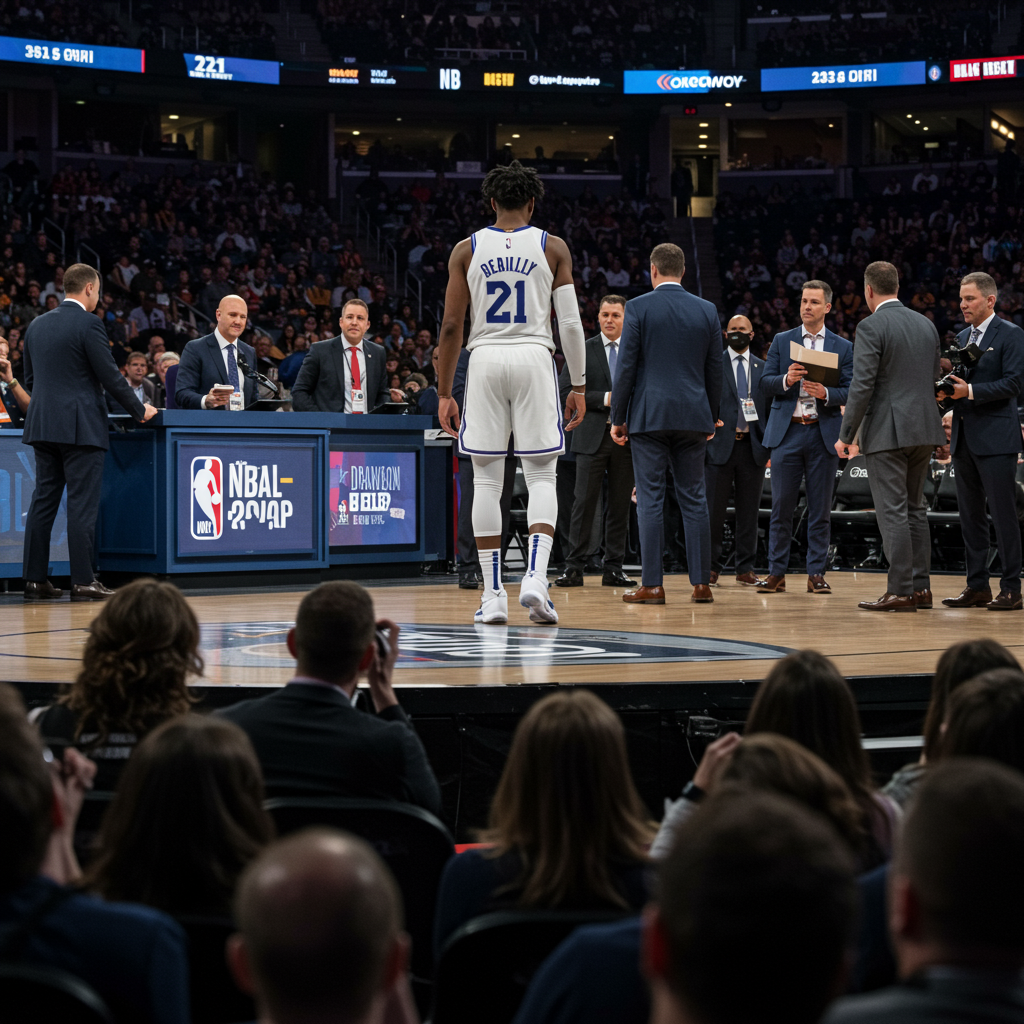The opening moments of NBA free agency always deliver a jolt of excitement and uncertainty across the league. It’s a period where team rosters can dramatically shift, championship aspirations are either fortified or fundamentally altered, and the futures of countless players are decided. For fans in Boston, this critical window brings intense focus on how the Celtics navigate player movement and position themselves for the upcoming season. Beyond the big headlines, these initial decisions reveal crucial insights into a team’s strategy, financial health, and competitive outlook. This year’s free agency period kicked off with anticipated moves, subtle adjustments, and the backdrop of recent playoff battles still fresh in mind.
Celtics Navigate Early Free Agency Moves
As NBA free agency commenced, the Boston Celtics saw some changes to their roster configuration. A notable early move involved center Luke Kornet, who departed Boston to sign with the San Antonio Spurs. Kornet had served as a valuable depth piece and reliable presence in the Celtics’ frontcourt rotation. His departure highlights the transient nature of free agency, where players seek new opportunities and teams adjust personnel based on financial considerations, role availability, and strategic fit. Losing a known quantity like Kornet necessitates the Celtics exploring options to maintain frontcourt depth, either through remaining free agents, trades, or internal development.
Teams like the Celtics, often operating near the salary cap, must make calculated decisions on retaining their own free agents versus pursuing outside talent. Every signing, no matter how minor, impacts the team’s financial flexibility under the increasingly stringent rules of the new Collective Bargaining Agreement (CBA). The CBA heavily penalizes teams in the second apron, severely limiting their ability to make trades and aggregate contracts, emphasizing the importance of savvy drafting and internal player development.
The Role of draft Picks in Team Building
Recent NBA Draft classes play a vital role in replenishing rosters and building sustainable success, particularly for teams facing salary constraints. While specific details about the Celtics’ recent draft picks weren’t extensively covered, understanding how top prospects are evaluated provides crucial context. Consider the case of Cooper Flagg, a consensus top draft pick whose journey from rural Maine highlights the multifaceted process of talent identification.
Flagg’s story, rooted in fundamental discipline and shaped by dedicated mentors, showcases the personal and environmental factors that contribute to developing elite skill. His decision to return to his Maine roots before the draft, training with local players away from typical fanfare, underscores the importance of player mentality and connection to their origins. Evaluators look not just at physical tools and statistics – which Flagg possesses in abundance (6’8″, 220 lbs, noted length and fluidity, plus advanced metrics) – but also intangibles like competitive drive, basketball IQ, and poise.
Flagg’s success at Duke, where he became a major award winner as a 17-year-old freshman, and his impressive performance against Team USA’s Olympic squad demonstrate the projection required in drafting. Teams analyze college production, efficiency (Flagg’s improved 3-point shooting and elite defense), and advanced metrics (his near-historic Box Plus-Minus). For teams like the Celtics, later in the draft, the process involves identifying players with specific skills that complement the existing core, potential for growth, and the character to fit into a winning culture. Every pick is an opportunity to add cost-controlled talent, a critical aspect of roster management in the modern NBA.
Celtics’ Position in a Competitive Eastern Conference
The Eastern Conference continues to evolve, with several strong contenders vying for supremacy. The Celtics’ competitive outlook for the next season hinges on retaining their core, integrating any new additions, and the continued development of existing players, including recent draft picks. Analyzing the conference’s landscape requires looking at other top teams and their strategies.
The recent Eastern Conference Finals clash between the New York Knicks and Indiana Pacers provided a glimpse into the intense, strategic battles at the top of the East. That series highlighted the importance of specific matchups, coaching adjustments, and depth. The Pacers, despite their speed and offensive efficiency, faced challenges like inconsistent 3-point shooting and defensive vulnerabilities exposed by players like Karl-Anthony Towns. The Knicks, despite their star power, struggled with defensive lapses from key players and relied heavily on strategic adjustments, like coach Tom Thibodeau’s willingness to bench a star player due to foul trouble. This series underscored that success in the East often comes down to exploiting opponent weaknesses and making timely tactical pivots.
Looking ahead to the NBA Finals between teams like the Oklahoma City Thunder and Indiana Pacers offers further perspective on successful team building. Both teams emphasize pace, depth, and coaching trust, but the Thunder’s significantly higher net rating illustrates that simply sharing a stylistic approach isn’t enough; overall talent and execution are paramount. Discussions around player evaluation, such as the scrutiny faced by Tyrese Haliburton for his scoring output despite his elite playmaking and overall impact, reveal the different expectations placed on stars and how teams build around their strengths. Haliburton’s ability to impact the game beyond scoring, coupled with Indiana’s focus on collaborative offense and improved defense, showcases alternative paths to success in the East. The Celtics must evaluate where they stand against these diverse threats and address any perceived weaknesses in their own roster construction.
Boston Bruins Free Agency and Draft Look
While the NBA takes center stage in the summer, Boston’s hockey scene also undergoes changes during free agency and the draft. The Bruins’ activities in picking up free agents and selecting new talent in the draft are crucial for shaping their roster and maintaining competitiveness in the NHL. Free agency in hockey allows teams to acquire veteran players or role players to fill specific needs, while the draft is the primary pipeline for future stars and organizational depth.
Discussions around player movement like the past Brad Marchand trade to Florida (though that trade occurred years ago, its mention suggests a look back at significant roster decisions) serve as reminders that teams constantly evaluate their assets and make strategic trades to retool or acquire future assets. Successful franchises balance immediate competitiveness with long-term planning, using free agency for incremental improvements and the draft for foundational pieces. Analyzing the Bruins’ free agency pickups involves looking at player contracts, their fit within the team’s system, and how they address positional needs. Similarly, evaluating their draft picks considers the prospects’ potential, scouting reports, and how they project within the team’s development pipeline. These decisions, while distinct from basketball, reflect the same core principles of roster management and strategic planning that govern NBA front offices.
Frequently Asked Questions
What impact do early NBA Free Agency moves have on teams like the Celtics?
Early free agency moves significantly shape a team’s roster and strategic options. For the Celtics, losing a player like Luke Kornet means needing to address frontcourt depth. These decisions are often driven by financial constraints, like navigating the restrictive second apron under the new CBA, which limits trade flexibility. Every signing impacts salary cap space and future moves, forcing teams to prioritize needs and find value in the market or through the draft.
How does the NBA Draft process, highlighted by prospects like Cooper Flagg, relate to Boston’s strategy?
The draft is critical for adding cost-controlled talent and building for the future. While Flagg is a top prospect case study, the process of evaluating player potential, physical tools, on-court production (like Flagg’s efficiency and defensive impact), and intangibles applies to all draft picks. For the Celtics, this means identifying players who can fit their system, offer specific skills, and develop within the organization, providing a vital pipeline of talent alongside free agency acquisitions.
How do team-building philosophies seen in the Eastern Conference playoffs affect the Celtics’ outlook?
Recent playoff series and finals previews highlight diverse successful strategies in the East. Teams like the Pacers emphasize pace, depth, and collaborative offense, while others might lean more on star power and specific matchup advantages (like the Knicks utilizing Towns). Evaluating these approaches helps the Celtics understand the competitive landscape and refine their own strategy, focusing on maintaining their strengths (likely defense and star power) while addressing potential weaknesses exposed by different opponents. The need for depth and strategic flexibility against various team styles is crucial.
Conclusion
The initial phase of NBA free agency, coupled with insights from recent drafts and the competitive landscape of the Eastern Conference, provides a nuanced picture of the Boston Celtics’ position and the broader dynamics of team building in the league. The departure of a role player like Luke Kornet is a small piece of the puzzle, but it underscores the constant roster management required. Examining draft strategy through the lens of high-profile prospects like Cooper Flagg highlights the importance of talent evaluation and long-term planning. Furthermore, analyzing the different approaches and challenges faced by Eastern Conference rivals, as seen in recent playoff battles, offers crucial context for Boston’s competitive outlook.
As free agency progresses and rosters solidify, the true impact of these early moves will become clearer. For the Celtics, the goal remains building a team capable of competing for a championship, a process that requires shrewd decisions in free agency, effective drafting, and strategic adaptation to the evolving challenges presented by their conference rivals.
Word Count Check: 1178



